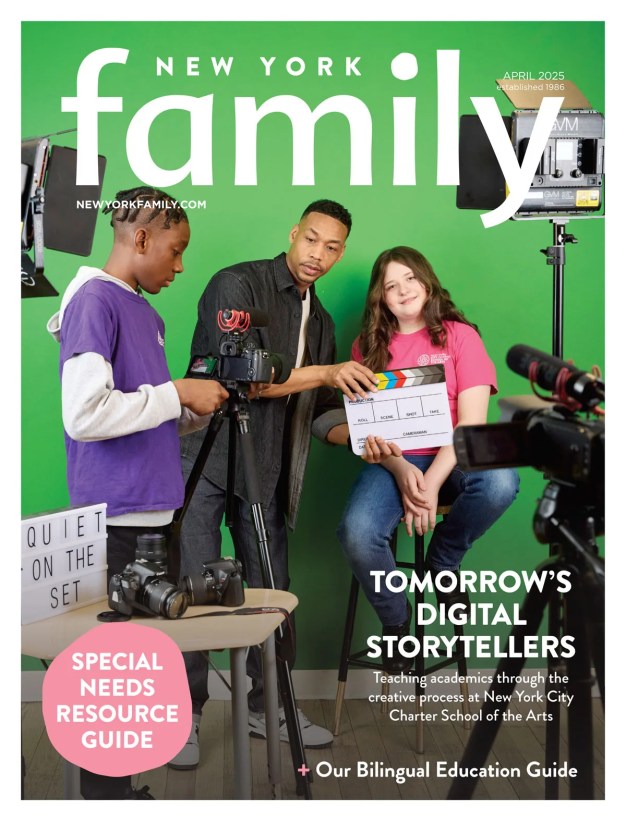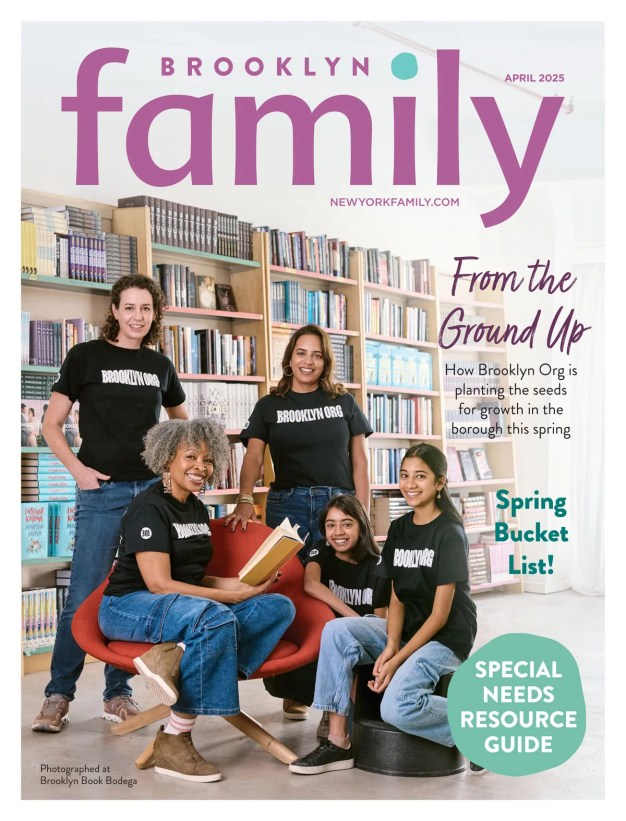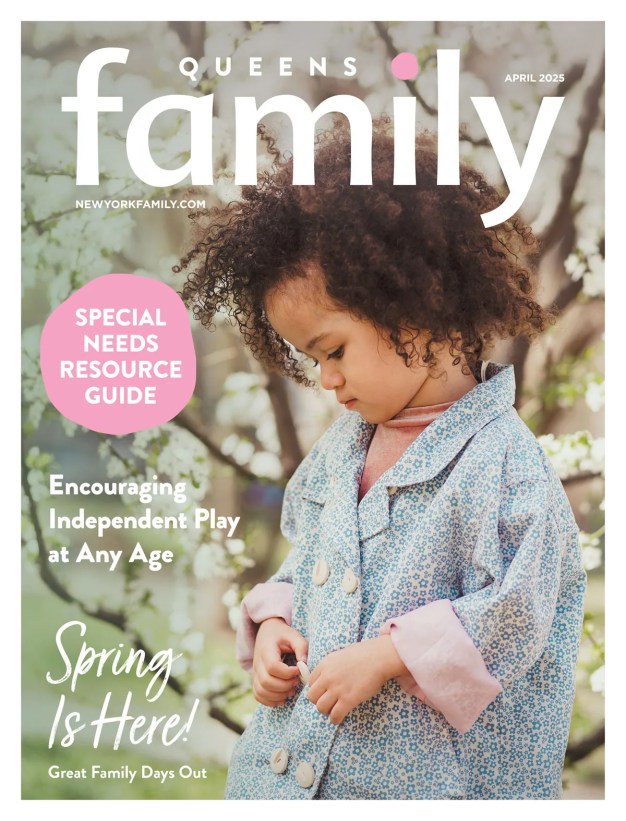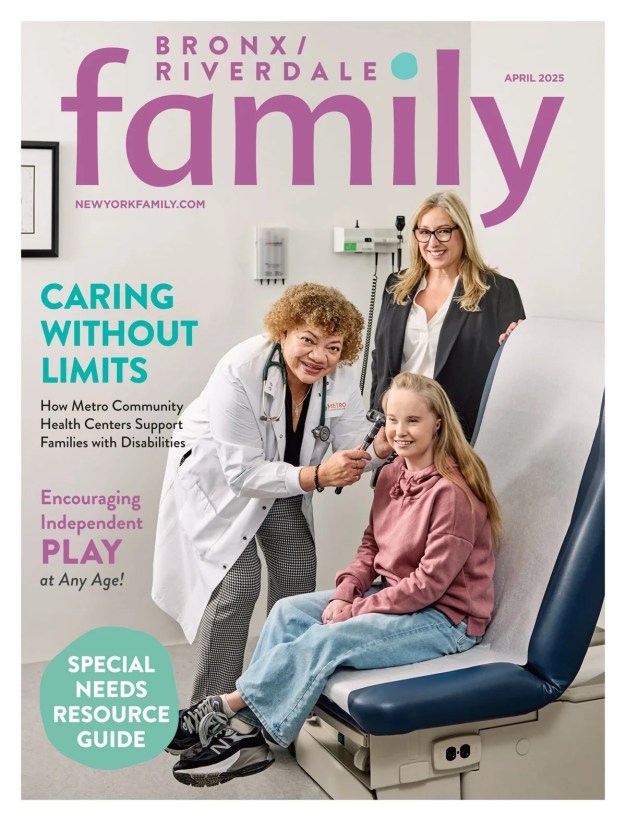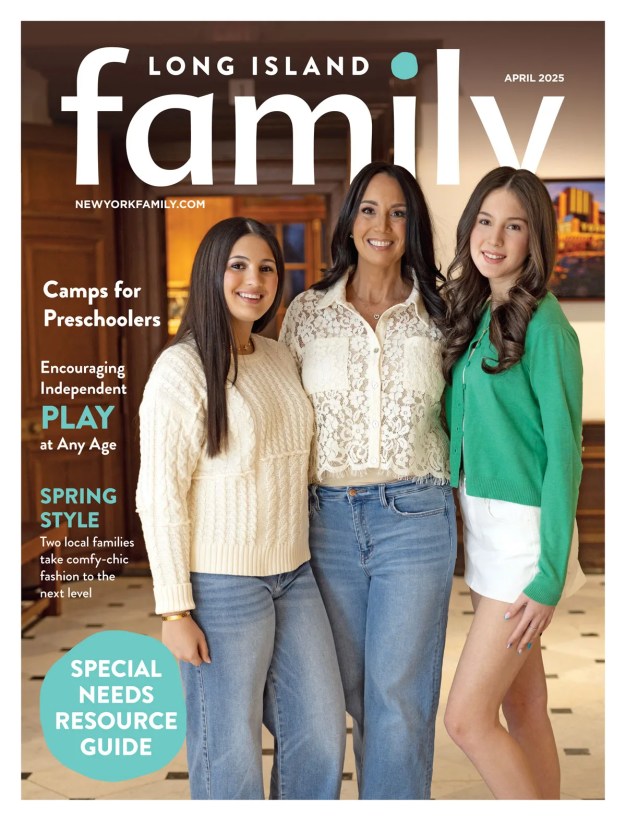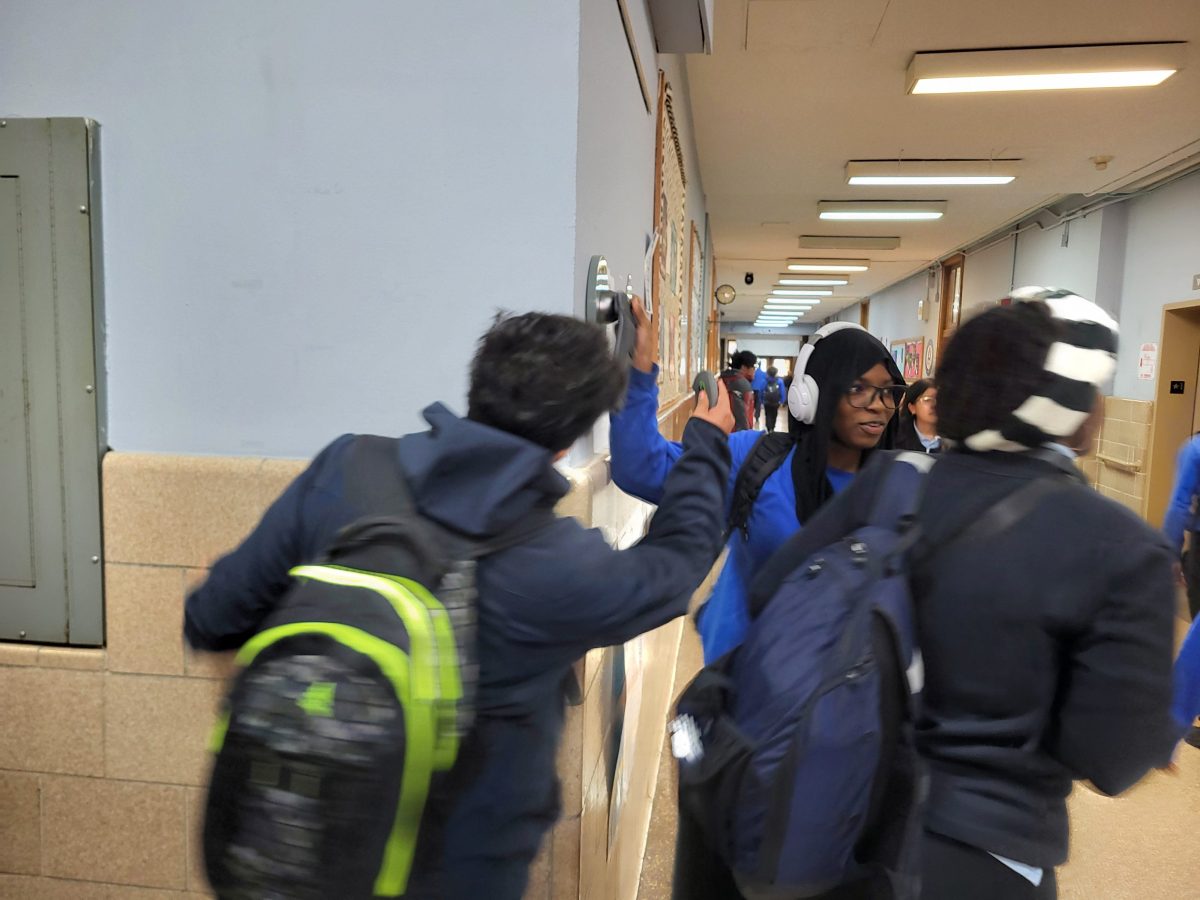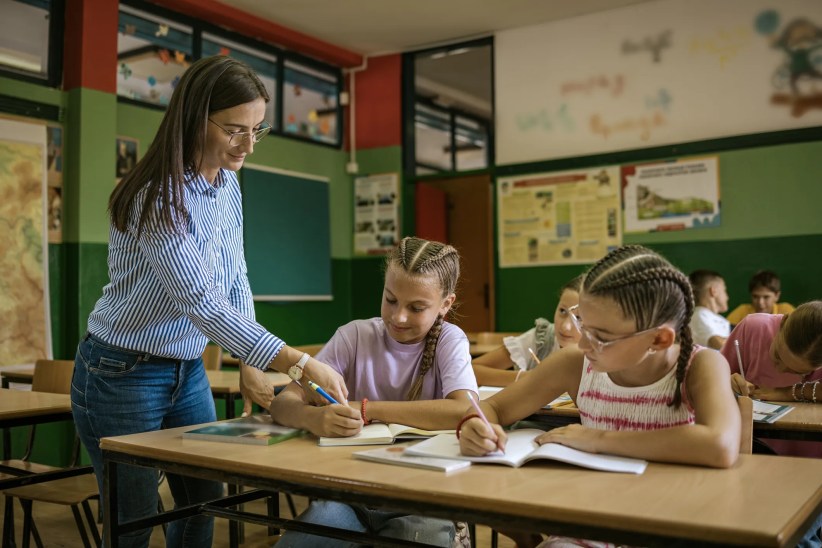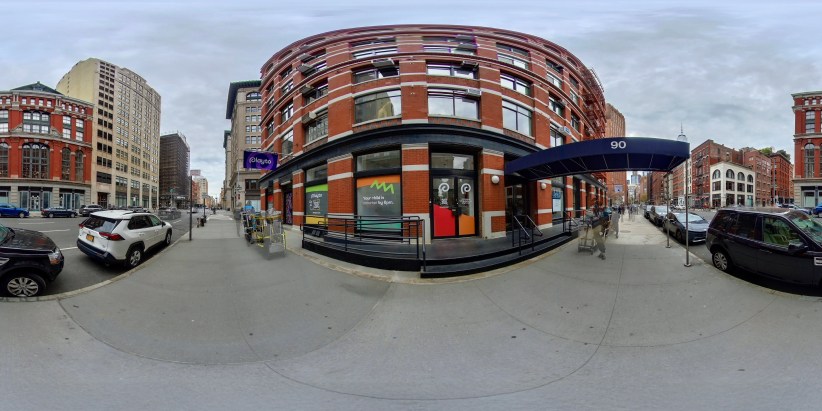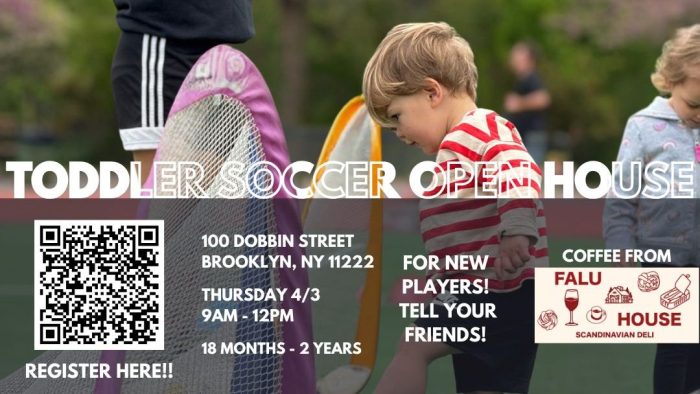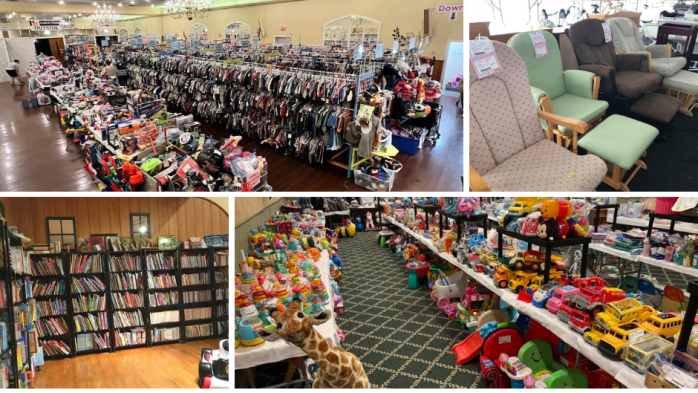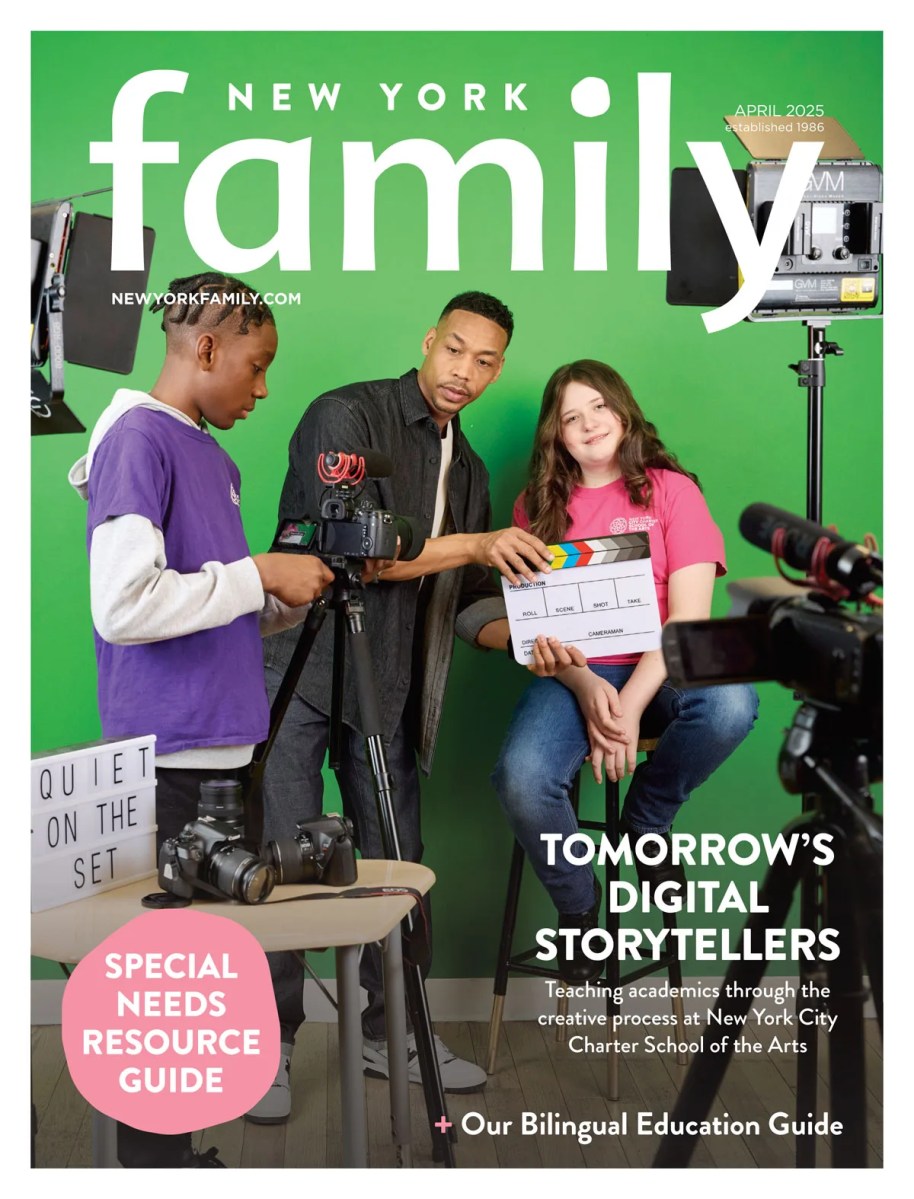Are middle school and high school easy for anyone? I don’t think so. The collection of school years that make up sixth through twelfth grade are often fraught with stress, uncertainty, intense self-discovery, and the pressure to succeed—not to mention the zenith of adolescent discomfort that is puberty. Which is why no group of kids is as primed to benefit from the unique qualities of a school like Fusion Academy as much as tweens and teens.
An accredited private academy for grades 6-12 with schools around the country, Fusion, which opened in Manhattan in September, is a school unlike any other when it comes to social dynamics. Children often spend almost as much time, if not more, worrying about friendships and social interactions as they do homework and exams. Fusion recognizes and addresses this reality through its unique approaches to learning and a wholly unconventional student-to-teacher ratio: one-to-one.
“Because we’re such a small school and we’re all so close, you can’t not get along with other people,” says Francisco Ayala, the Head of School at Fusion in Manhattan, where enrollment is capped at just 60 students. “[All of our students] learn social skills. They learn to be tolerant. They learn to be compassionate and see the unique values that everyone brings to the table.”
New to New York, Fusion first began on the West Coast over twenty years ago. Educator Michelle Rose Gilman was working with a group of six students in need of a more hands-on approach to learning. After losing funding at their Solana Beach school in California, Gilman took the students into her home-turned-classroom and the need for Fusion was realized.
At a place as intimate and accommodating as Fusion—with its Manhattan school currently based in Midtown East and moving to a new home in Murray Hill with twice as much space later this month—students can focus on their academics and also work with teachers through personal problems if needed. Think about it: In a classroom with just one student, the teacher is able to work through the coursework at whatever pace the pupil demands. And if trouble at home or an outside issue is getting in the way of that student’s concentration, it can be addressed immediately and with utmost care. That’s the type of personal touch that both parents and adolescents can appreciate in the classroom setting.
Any sixth through twelfth grader can attend Fusion, but it’s specifically geared toward students for whom the traditional school environment isn’t working. This includes tweens and teens with social or emotional difficulties, learning disabilities, and those who are gifted or have atypical schedules, as is often the case with professional athletes, kids in the entertainment industry, or those with health issues. Students are required to have at least average intelligence, and most of them are “really strong academically but need a more responsive and caring learning environment,” Ayala says. “We can challenge them in ways that other schools can’t because we’re not bound by the needs of a larger classroom.”
Using college-level material with advanced learners, Fusion currently teaches 34 full-time students and tutors an additional three. “The beauty of Fusion is that we can provide a really rigorous college preparatory education in a way that’s accessible, responsive, and adaptable, and really builds confidence and self-advocacy within the students,” Ayala says.
It’s no surprise then that Fusion students tend to be self-motivated with a keen eye on their futures. Approximately one-fifth of the student body at Fusion is there with the intention to remediate and transfer back to a traditional school environment at some point. For those who stay at the academy, the majority of students graduate with a high school diploma and many continue their educations at colleges and universities.
Another significant way in which Fusion sets itself apart from bigger private schools in New York City is the directive that students complete all of their homework on campus. Based on the idea that parents can’t (and perhaps shouldn’t) attempt to support or manage their children’s workload, Fusion houses a homework café where students work on assignments outside of the classroom throughout the day. Teachers are there to answer questions and provide intensive support. Free from the distractions of home life, students can maintain focus and leave the school at the end of the day to enjoy time with their families.
The benefits of Fusion are obvious, but the school isn’t for everyone, such as students with severe needs or those who may be a danger to themselves or others. “Our teachers aren’t all special ed. trained,” Ayala notes.
But for every student who may not have the practical need or appreciation for a place like Fusion, there are countless tweens and teens who do. Traditionally, those who are struggling in private institutes are often sent to boarding schools. Fusion is a distinct alternative, allowing them to stay at home. If a kid requires more personalized attention and is willing to forego some of the conventional aspects of high school like pep rallies and prom, Fusion Academy may be the perfect place. And there’s even talk of a future Fusion for grades K-5, with parents of children with attention deficit-hyperactivity disorder expressing the most interest. “Academically, [students with ADHD] can do really well, but in classes with thirty students it’s hard to [let] one stand in the classroom or sit on a balance ball,” says Ayala with regard to the flexibility that so many ADHD students crave.
“A lot of schools are more focused on academics, on testing, on reputations,” Ayala continues—which is actually how Fusion distinguishes itself most compellingly. To walk the halls of Fusion is to palpably feel a warm welcome from students and teachers alike.
“We’re very intentional about creating a place where staff want to be—making them feel connected and part of a family,” Ayala says. The types of instructors—who essentially are the big brothers and big sisters of that family—are usually attracted to the one-on-one teaching experience for the student connections and opportunities to mentor. Aside from knowing their subject-matter thoroughly, teachers are also expected to exercise flexibility and trust, and be willing to put a lesson on hold if a student requires special guidance or attention.
What it comes down to is that the teachers genuinely care about each student beyond their test scores and classroom comportment. Ayala even goes so far as to mention love in the school. “It’s such a faux pas to ever talk about love and caring for students in an educational setting,” he says, “but that’s one of the foundations of our program.”
As far as ultimate success stories go, it takes Ayala a moment to pick just one from his big student brag catalogue. “We have one student from Westchester who commutes from Scarsdale every day,” he begins. “Brilliant kid, so much potential. When you read his profile prior to meeting him, you’d think he was a kid that nobody could help.”
“He’s been to every type of school. He tried boarding school, public high school, Catholic school. He was referred to us by three different consulting groups,” Ayala continues. “And here at Fusion, he’s one of our leaders on campus. You come to tour campus and he is the social scene. He’s really found the place for him.”
It’s deeply satisfying to know that a kid who felt he didn’t belong anywhere else has found refuge at Fusion Manhattan. And, for an untold number of students out there, that middle and high school can be years to cherish and time to explore, rather than days to endure.
To read more about how Fusion was founded, visit www.newyorkfamily.com/fusion-academy-manhattan. And for more information, visit fusionacademy.com
